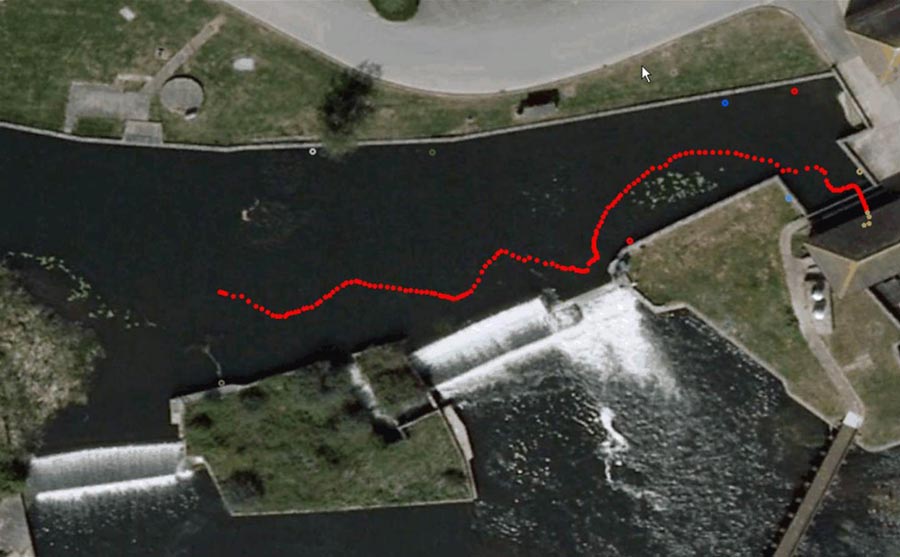

An avoidance path taken by a downstream moving adult eel as they approached the hydropower intake, was obtained using 3-D acoustic telemetry.
Credit: University of Southampton
The European eel, a fish of high cultural, commercial and conservation concern, has suffered a dramatic decline over recent decades, with the number of juvenile fish returning to rivers down by over 90 per cent.
While several explanations (including overfishing, pollution and climate change) have been proposed for the cause of this demise, one of the key factors is river infrastructure, such as hydropower stations, that can injure or kill the long bodied adult fish as they migrate to the ocean and eventually to the Sargasso Sea where they spawn.
Because of their long bodies, eels that enter turbine intakes are likely be struck by the rotating blades, causing physical injury and high rates of mortality.
An international collaboration between fish biologists and engineers, led by researchers at the University of Southampton and involving the Environment Agency and the University of Padua in Italy, has now demonstrated the potential to use accelerating water gradients, common at many types of river infrastructure, to influence eel behaviour and produce an avoidance response.
In field experiments, Dr Adam Piper, from the University's International Centre for Ecohydraulics Research (ICER), used acoustic telemetry to track the paths of 40 tagged eels as they approached a hydropower intake site where the speed of water flows were manipulated.
The results of the research, published in the journal Proceedings of the Royal Society B, demonstrated that eels exhibited stronger avoidance when the acceleration of water velocity was greater.
Initially, the eels aligned with streamlines near the channel banks and approached the intake semi-passively. Under normal water velocity, when the eels encountered the constricted flows of the intake, exploratory 'search' behaviour was common prior to coming into physical contact with structures. However, under high water velocity gradients, the eels swam in the opposite direction to escape rapidly back upstream.
Dr Paul Kemp from ICER and the project leader, said: “This interdisciplinary research provides hope that behavioural deterrents may be developed to divert eels away from hazardous routes during their downstream migration.”












